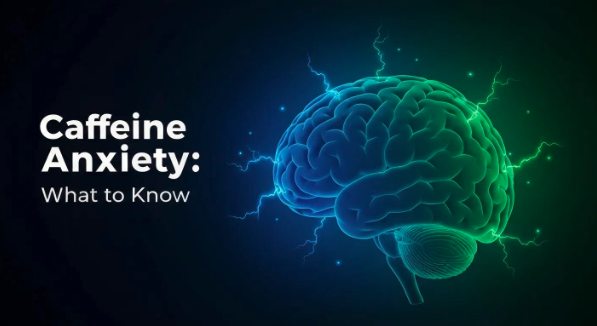Mood Stabilizers Types, Effectiveness, and Side Effects
Explore mood stabilizers: types, effectiveness, and side effects to find the best treatment for mood disorders.

Understanding Mood Stabilizers
Mood stabilizers play a crucial role in managing mood disorders, particularly bipolar disorder. These medications are designed to help regulate mood fluctuations and improve emotional stability. A comprehensive understanding of mood stabilizers is essential for anyone looking to support mental health effectively.

Role of Mood Stabilizers
Mood stabilizers are primarily used to prevent the extreme mood swings associated with mood disorders, particularly the highs (mania or hypomania) and lows (depression) experienced in conditions like bipolar disorder: navigating the highs and lows. They work by stabilizing mood and reducing the frequency and severity of mood episodes. These medications can also serve as adjunctive treatments along with antidepressants and other therapeutic approaches, providing a more holistic approach to mental health management.
Common mechanisms of action among mood stabilizers include inhibiting the inositol uptake process, which is vital for neurotransmission. This mechanism is especially noted in established medications such as lithium, valproic acid (divalproex), and carbamazepine, which have demonstrated effectiveness in treating acute manic episodes and prophylaxis against future episodes. For a deeper understanding of mood disorders, check out our article on understanding mood disorders: an overview.
Types of Mood Stabilizers
There are several types of mood stabilizers, each with unique properties and applications. The most notable among these include:
Mood StabilizerCommon UsesMechanism of ActionLithiumBipolar disorder, acute mania, prophylaxisInhibits inositol uptake; targets cellular enzymesValproic acid (Divalproex)Bipolar disorder, manic episodes, seizuresInhibits inositol uptake; similar targets as for epilepsyCarbamazepineBipolar disorder, seizures, trigeminal neuralgiaInhibits inositol uptake; mood stabilizing properties
Both valproic acid and carbamazepine not only share similar primary targets for mood stabilization but are also used in treating epilepsy [1]. It is essential to consult with a healthcare professional for personalized recommendations based on individual symptoms and medical history.
Understanding these variations can help individuals and their caregivers make informed decisions about treatment options. For more about mood disorders and their effects, visit our article on the spectrum of mood disorders explained.
Effectiveness of Mood Stabilizers
Understanding the effectiveness of mood stabilizers is crucial for managing mood disorders. Lithium remains a prominent choice, but several alternative options exist.
Lithium as a Mood Stabilizer
Lithium is frequently prescribed as a mood stabilizer for individuals with bipolar disorder. It has proven effective in controlling both mania and depression symptoms. Typically, lithium can start to reduce symptoms of mania within two weeks. However, it also carries the risk of several side effects, including potential long-term kidney problems [2].
For those considering lithium, it is essential to acknowledge its tailored role in treating mood disorders. The strongest indication for mood stabilizers is bipolar disorder, and its effectiveness can vary based on individual patient needs [1]. Due to its commonly experienced side effects, regular monitoring—including physical exams and laboratory tests—before initiating therapy and during treatment is vital.
Effectiveness IndicatorsTimeframeSide EffectsReduces symptoms of mania~2 weeksTremors, weight gain, hypothyroidism, kidney issues
Alternative Mood Stabilizers
Alternative mood stabilizers can offer solutions for patients who may experience adverse effects from lithium or those requiring additional treatment options. As noted by researchers, reliance on lithium alone may not be the best long-term strategy for managing bipolar disorder.
Among the alternatives, medications like valproic acid, carbamazepine, and lamotrigine have gained traction. Each offers different strengths and weaknesses specific to mood stabilization needs:
MedicationCommon Side EffectsValproic AcidWeight gain, GI disturbances, alopeciaCarbamazepineGI upset, integumentary issuesLamotrigineRash, nausea, dizziness
The selection of a mood stabilizer should be individualized, considering factors such as contraindications and patient history. This tailored approach can be fundamental in effectively managing mood disorders over time. For a deeper understanding of mood disorders, consider exploring our articles on bipolar disorder: navigating the highs and lows and the spectrum of mood disorders explained.
Side Effects of Mood Stabilizers
Understanding the side effects associated with mood stabilizers is essential for anyone considering or currently using these medications. While they can provide significant benefits for mood stabilization, they may also lead to various adverse effects.
Common Side Effects
Common side effects of mood stabilizers can vary depending on the specific medication taken. Below is a table summarizing some typical side effects associated with popular mood stabilizers like lithium, valproic acid, divalproex, and carbamazepine.
Mood StabilizerCommon Side EffectsLithiumWeight gain, tremors, kidney problemsValproic AcidDrowsiness, nausea, weight gainDivalproexDizziness, hair loss, tremorsCarbamazepineDrowsiness, nausea, double vision
It's essential for individuals to monitor these side effects closely, as they may be affected by dosage and individual reactions [1]. Regular check-ins with a healthcare provider are recommended to manage these potential issues effectively.
Long-Term Impacts
While mood stabilizers can be effective in treating mood disorders, long-term use may lead to more serious health concerns. For instance, lithium, which is commonly prescribed for bipolar disorder, is known for its effectiveness in managing both manic and depressive episodes. However, it can cause long-term kidney issues if not monitored regularly.
In general, mood stabilizers can have varying long-term effects, impacting different organs and systems in the body. This variability highlights the importance of routine monitoring and adjustments to treatment plans as needed. Regular assessments can help manage any long-term effects that may arise, allowing individuals to maintain a balanced life while effectively managing their mood disorders.
Individuals taking mood stabilizers should stay informed about the potential side effects and long-term impacts of their medications. For more detailed information on mood disorders, consider reading our articles on understanding mood disorders: an overview and bipolar disorder: navigating the highs and lows.
Considerations for Mood Stabilizer Use
When using mood stabilizers for managing mood disorders, understanding the importance of consistency and effective medication management is essential for achieving the best possible outcomes.
Importance of Consistency
Consistency in taking prescribed medications is crucial for successfully living with mood disorders, particularly bipolar disorder. Many individuals may desire to discontinue their medication due to side effects, but this can lead to significant challenges in mood regulation. Close monitoring by healthcare professionals is necessary to adjust treatment plans and address any adverse effects experienced [2].
Reasons for ConsistencyImpact of InconsistencyStabilizes mood fluctuationsIncreased frequency of mood episodesReduces hospitalization ratesHeightened risk of severe depression or maniaPromotes overall mental health stabilityPotential withdrawal effects or return of symptoms
Mood stabilizers are typically non-addictive, but stopping them suddenly can result in withdrawal effects. Therefore, it is advised to taper off medication gradually under a doctor's supervision. The process may take several months to minimize the risk of severe mood episodes [3].
Medication Management
Effective medication management is essential when using mood stabilizers. Regular monitoring prior to initiating therapy and during treatment—including physical exams, laboratory tests, and toxicity assessments—is necessary to ensure optimal dosing and prevent adverse effects.
Mood stabilizers may interact with other medications, impacting blood levels and requiring dosage adjustments. It's crucial for individuals to inform their healthcare providers about all medications they are taking, including over-the-counter drugs and supplements. Additionally, substances like alcohol, caffeine, and street drugs can influence the effectiveness and side effects of mood stabilizers [3].
Medication Management AspectsKey ConsiderationsMonitoringRegular physical exams and laboratory testsInteraction AwarenessInforming healthcare providers of all medicationsGradual AdjustmentsTapering off medications under supervision
Understanding these considerations can greatly enhance the effectiveness of treatment for mood disorders. Ensuring adherence to medication and effectively managing treatment plans can help individuals achieve greater stability and improved quality of life. For further insights, readers can refer to articles on bipolar disorder: navigating the highs and lows and the spectrum of mood disorders explained.
Tailoring Treatment with Mood Stabilizers
Effectively addressing mood disorders requires a tailored approach to treatment, focusing on individualized plans and ongoing monitoring. This process ensures that the chosen mood stabilizers are both safe and effective for each individual.
Individualized Treatment Plans
Creating an individualized treatment plan is crucial for anyone using mood stabilizers. Each patient's response to medication varies, necessitating a personalized approach. Factors like age, overall health, and specific mood disorder types influence plan development. For instance, medications like lithium, valproic acid, and carbamazepine all share mechanisms that stabilize mood by inhibiting inositol uptake, and thus finding the right fit for the patient is vital.
Additionally, contraindications must be considered. For instance, pregnant individuals need to avoid certain medications like lithium due to potential risks. The healthcare provider will evaluate these factors to decide the most effective mood stabilizer and the appropriate dosage.
Mood StabilizerCommon UsesSide EffectsLithiumBipolar disorderTremors, weight gain, hypothyroidismValproic AcidMania, mixed statesWeight gain, GI disturbances, alopeciaCarbamazepineMania, mixed statesDizziness, drowsiness, skin sensitivity
Monitoring and Adjustments
Regular monitoring is essential throughout the treatment process. This includes physical exams, laboratory tests, and toxicity assessments to ensure the medication's effectiveness while minimizing side effects [1]. Blood tests may be particularly important for medications like carbamazepine, which can affect blood cell counts.
Patients should report any adverse effects encountered during treatment, such as mouth sores or flu-like symptoms while on carbamazepine [3]. Adjustments to medication type or dosage may be necessary based on these observations to optimize treatment effectiveness and manage side effects.
Adopting a comprehensive management approach that encompasses individualized plans and continuous monitoring will enhance treatment outcomes for mood disorders. For more insights into related conditions, visit our articles on bipolar disorder and the spectrum of mood disorders.
Health Management with Mood Stabilizers
Managing mood disorders, particularly bipolar disorder, requires a multifaceted approach that includes the use of medications such as mood stabilizers, along with supportive therapies.
Bipolar Disorder Management
Mood stabilizers play a significant role in the management of bipolar disorder. These medications are specifically designed to reduce mood swings, prevent both manic and depressive episodes, and maintain a balanced mood range for individuals. According to CAMH, the effectiveness of mood stabilizers can take several weeks to manifest fully, and adjunct psychiatric medications may be required for acute episodes.
Uncontrolled bipolar disorder can lead to severe consequences for both the mind and body, including increased risks for physical ailments and other mental health issues like anxiety disorders and substance abuse. Consistency in medication adherence is vital; frequent discontinuation can exacerbate symptoms and impede recovery Healthline.
Bipolar Disorder Management TechniquesDescriptionMedicationMood stabilizers to reduce symptoms and stabilize mood.Regular MonitoringClose follow-up with healthcare professionals to adjust treatment.Lifestyle ChangesRegular exercise, a healthy diet, and sleep hygiene for overall health.
Integrating Therapy for Wellness
Combining medication with therapies enhances the overall management of mood disorders. While mood stabilizers help mitigate acute mood swings, supplementary therapies can provide additional support for emotional regulation and coping mechanisms.
Therapies such as interpersonal therapy, cognitive-behavioral therapy (CBT), and family-focused education are particularly effective. These therapies address the challenges faced by individuals with bipolar disorder and equip them with necessary skills to handle daily life more effectively [3].
Integrating support systems, such as family involvement and group therapy, can foster a more robust recovery environment. This holistic approach not only targets the symptoms of bipolar disorder but also enhances interpersonal relationships and emotional understanding.
Therapy TypesBenefitsInterpersonal TherapyImproves relationships, communication skills, and social support.Cognitive-Behavioral TherapyHelps change negative thought patterns and behaviors.Family-Focused EducationEngages family members in the treatment process to support recovery.
Using a combination of mood stabilizers and therapeutic approaches greatly contributes to managing and understanding mood disorders. It allows individuals to engage more fully in their hobbies, interests, and relationships while maintaining their mental health.
References
[2]:
[3]:
More Resources
A team ready to start your journey.
Get in touch — today.
We are a safe space – a haven for exceptional individuals to receive discreet, personalized, in-person treatment and care.
.avif)



.webp)






